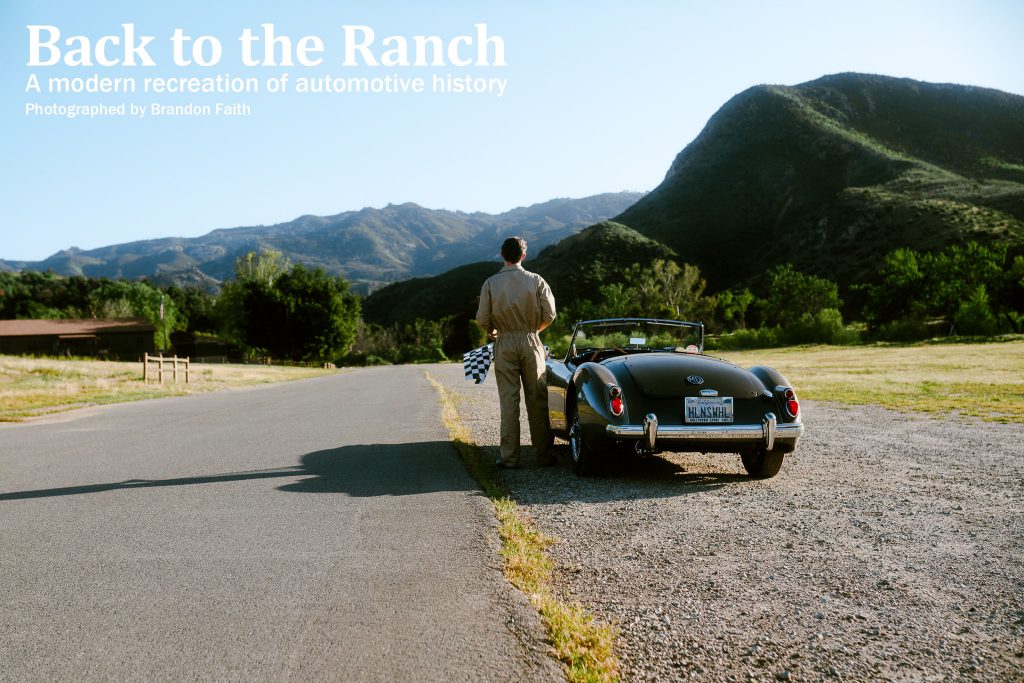
article and photography by Brandon Faith
The year is 1956. Loud roars emerge from the valleys of the Santa Monica Mountains. Amateur racers have flocked to Paramount Ranch to take on the newly created track by Ken Miles and Dick Van Laanen. Two thousand spectators line the two mile track to see their friends and local heroes race iconic cars such as the Porsche Speedster, Porsche 550 Spyder, Mercedes 300 SL, Jaguar D-Type, Ferrari 375, MG MGA and more. What they don’t know is that in two years the track will be closed for safety concerns and practically forgotten after only seven races. In 2022, we return with Daniel Harrison’s 1958 MGA to appreciate the forgotten memories and vintage craftsmanship.
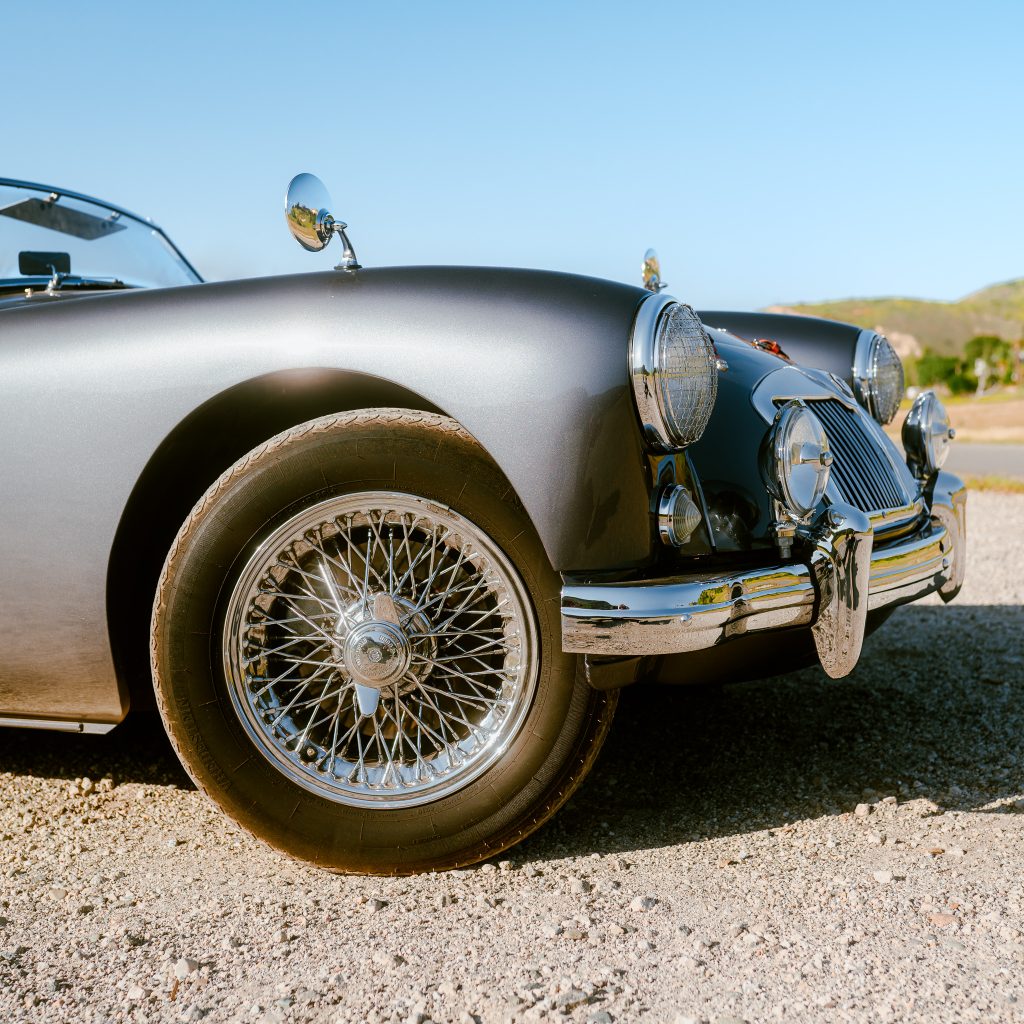
The MG MGA was made from 1955 till 1962 and was made to replace MG TF 1500 with its more boxy and relatively outdated styling. The changes were immense. Most obviously, this new era for MG seemed to be defined by curves. The MGA does seem to take inspiration from the TF’s fenders in this department, however the front nose of the car is almost opposite to the TF. Where the TF had low fenders with a high front nose, the MGA had high fenders with a more sweeping front nose. These changes partially occurred because of MG’s BMC B-series engine with its smaller size. With its iconic British style, four speed gearbox, and independent suspension, the car became iconic.
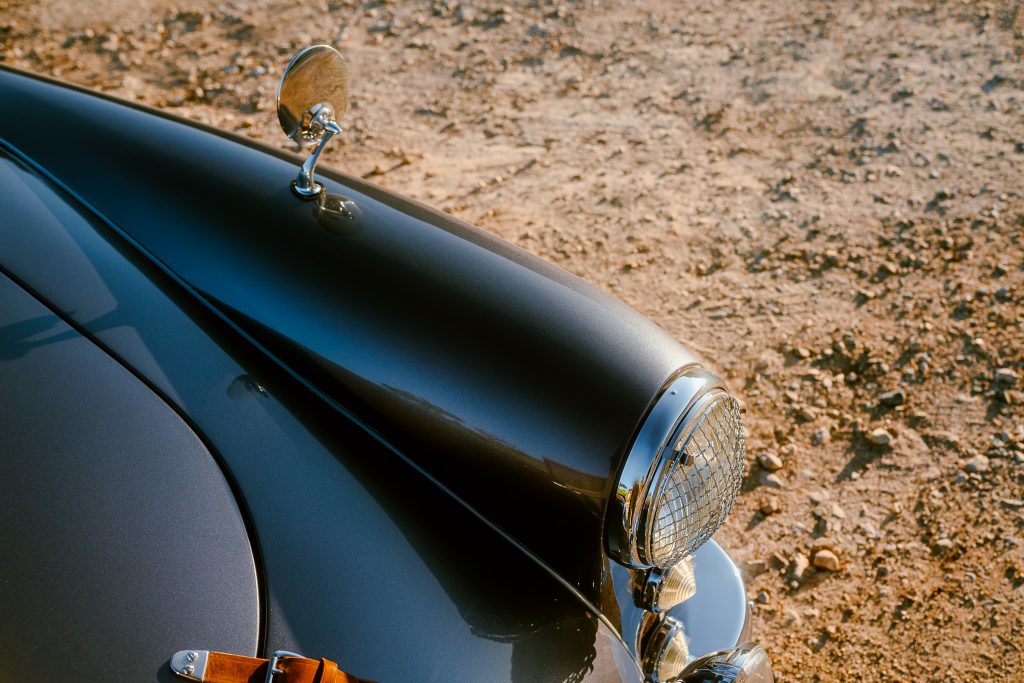
Improvements came to the MGA most notably in three versions. In 1958, the twin cam model was introduced bumping power up to 108hp. In 1959, the base models were introduced with a new 1588cc engine. Though called the 1600 version -MG seems to have rounded up here – base model power was increased to 79.5 brake horsepower. With a little bore tweaking, the last notable version came in the MGA Mark II increasing engine size to 1622cc.
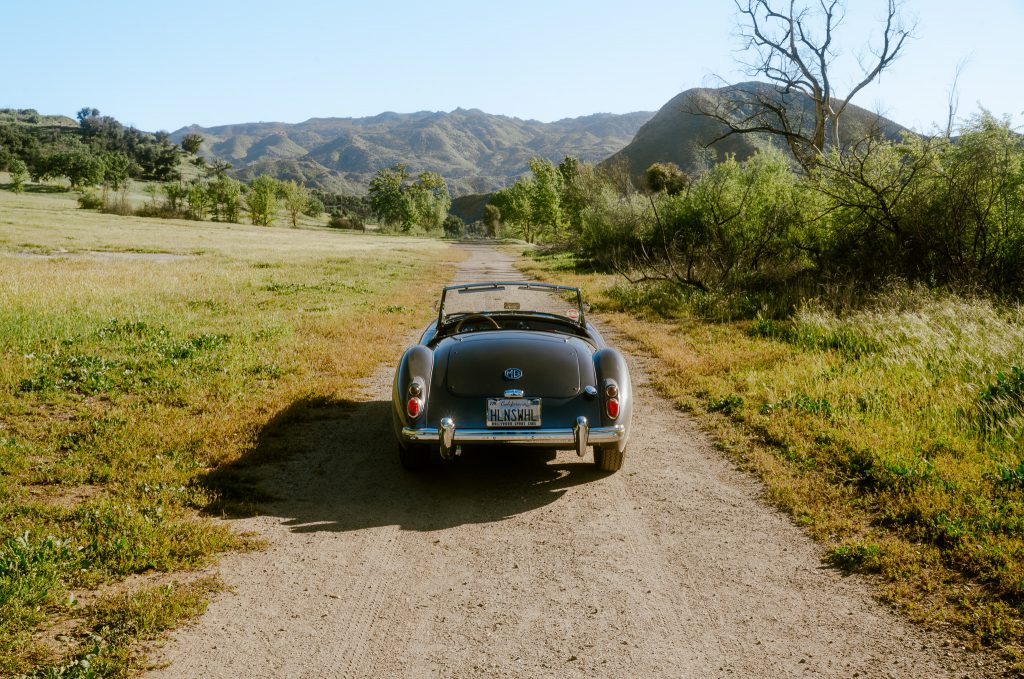
But how does the MGA end up at Paramount Ranch? Two answers: car and driver. The MGA was born to race. In 1951 English racing driver George Phillips commissioned a special MG TD for the 24 Hours of Le Mans. Though he did not know it yet, George was commissioning a car very similar to the upcoming MGA. This prototype came to be called the EX 175 with the later EX 182 racing at the 1955 24 Hours of Le Mans. In fact, three prototype MGAs raced at this event with one crashing out, and the others coming in a respectable twelfth and seventeenth. From this point on, race enthusiasts realized the capability of the MGA. A quick nimble car that can win on Sunday while also being classy enough to cruise in; what is there not to like? Gentleman racers began snatching up the car for these purposes with one example being the drivers at Paramount Ranch. Just as early owners saw the potential of the MGA, so did Daniel Harrison almost sixty years later.

Quite the British lad as many might describe Daniel, he came to Los Angeles at the age of seven; However, “you can never take the England out of the boy” as Daniel says. The way Daniel approached this theory was through cars; is there really a better way?
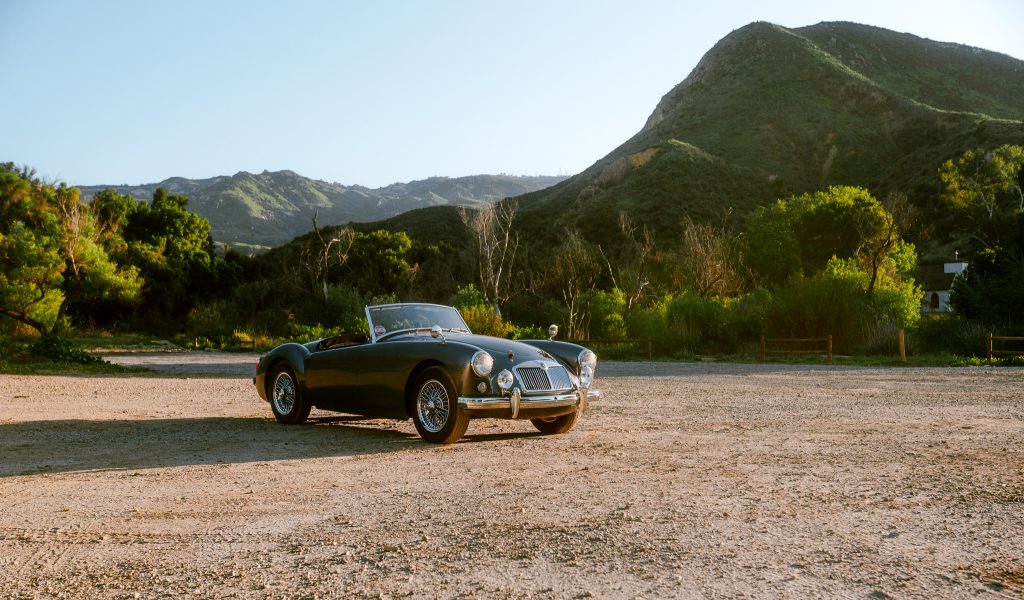
At 15, Daniel’s dad surprised him with the car after Daniel had been interested, yet doubtful that he would end up with it. Daniel immediately began work on the car even at such a young age. Receiving an undergrad at UC San Diego and a masters at Cambridge, he graduated with a mechanical engineering degree. With this background, Daniel was able to do all the restoration himself that he believed he could do while keeping the car as safe as possible. Though most of the work was done by him, he attributes much of his knowledge to other local MG owners and car enthusiasts. Some bigger projects, such as perfecting the body itself, were sent elsewhere to be worked on. After nine years, the car still receives slight tweaks and upgrades for one hundred percent flawlessness, while also constantly being driven by Daniel to ensure the car’s memories never die.
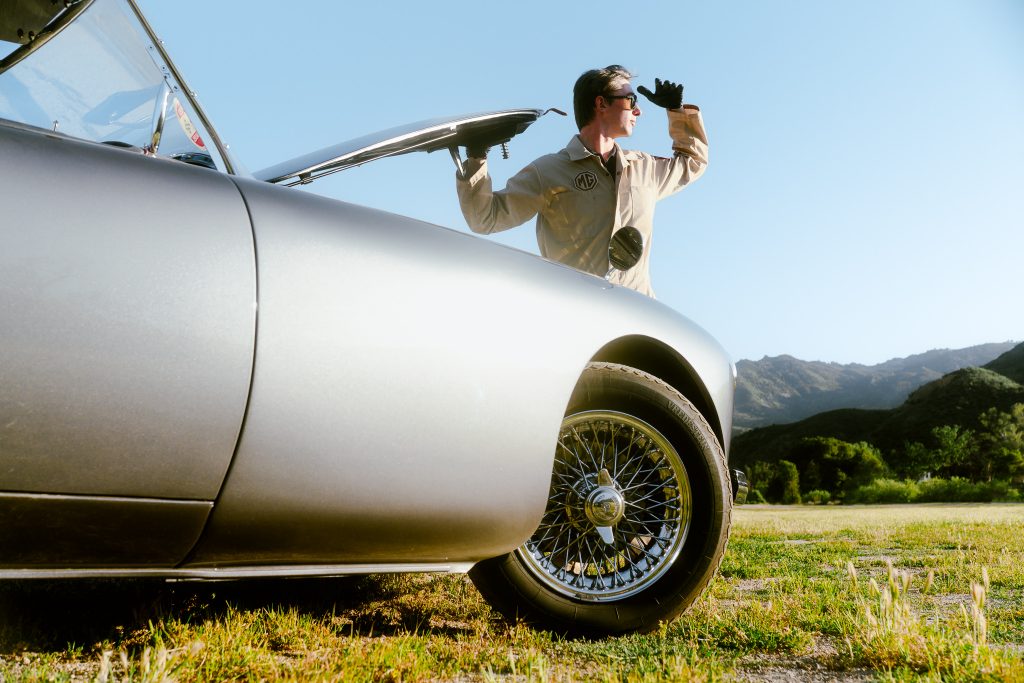
A “true sports car” as Daniel calls it, the car is extremely nimble and light. Boasting an MGB engine with a VP11 cam, the car has the perfect amount of horsepower to dominate the highways in the mornings and to carve through the canyons in Malibu in the afternoons. Not built for pure speed, the car fits in well with the figure eight shape of Paramount Ranch.

Helen, as Daniel refers to the car, is named after his mother who passed away to cancer during the restoration of the car. One of the only personal touches Daniel has added to the car, the dash includes a copy of a painting done by his mother of a field of poppies.

As the sun sets on Paramount Ranch feelings of nostalgia sweep over the car. It is no wonder this location was seen as ideal for the 1950’s gentleman racer to have a weekend getaway. The scenery, the glow, the car, the roar, and the adrenaline coalesce to create a one-of-a-kind feeling. This type of racing can only be mimicked by modern cars, so it seems the best way to really appreciate Daniel’s MGA is to take it to a place where it performs best.
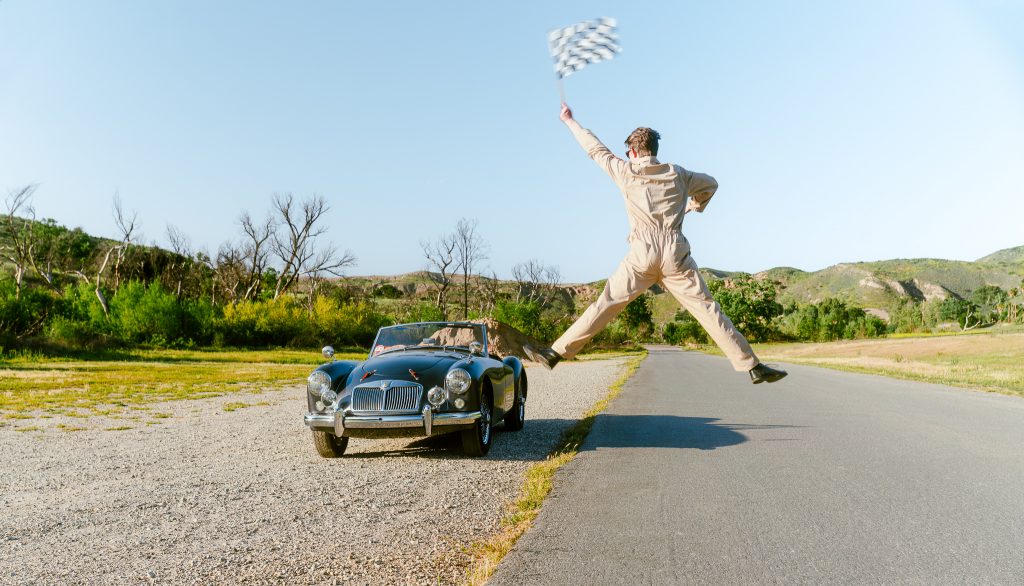
You can find more about Daniel and the car through his social media platforms @daniel.harrison. You can also watch all his British car escapades through his youtube channel: limit 55.


